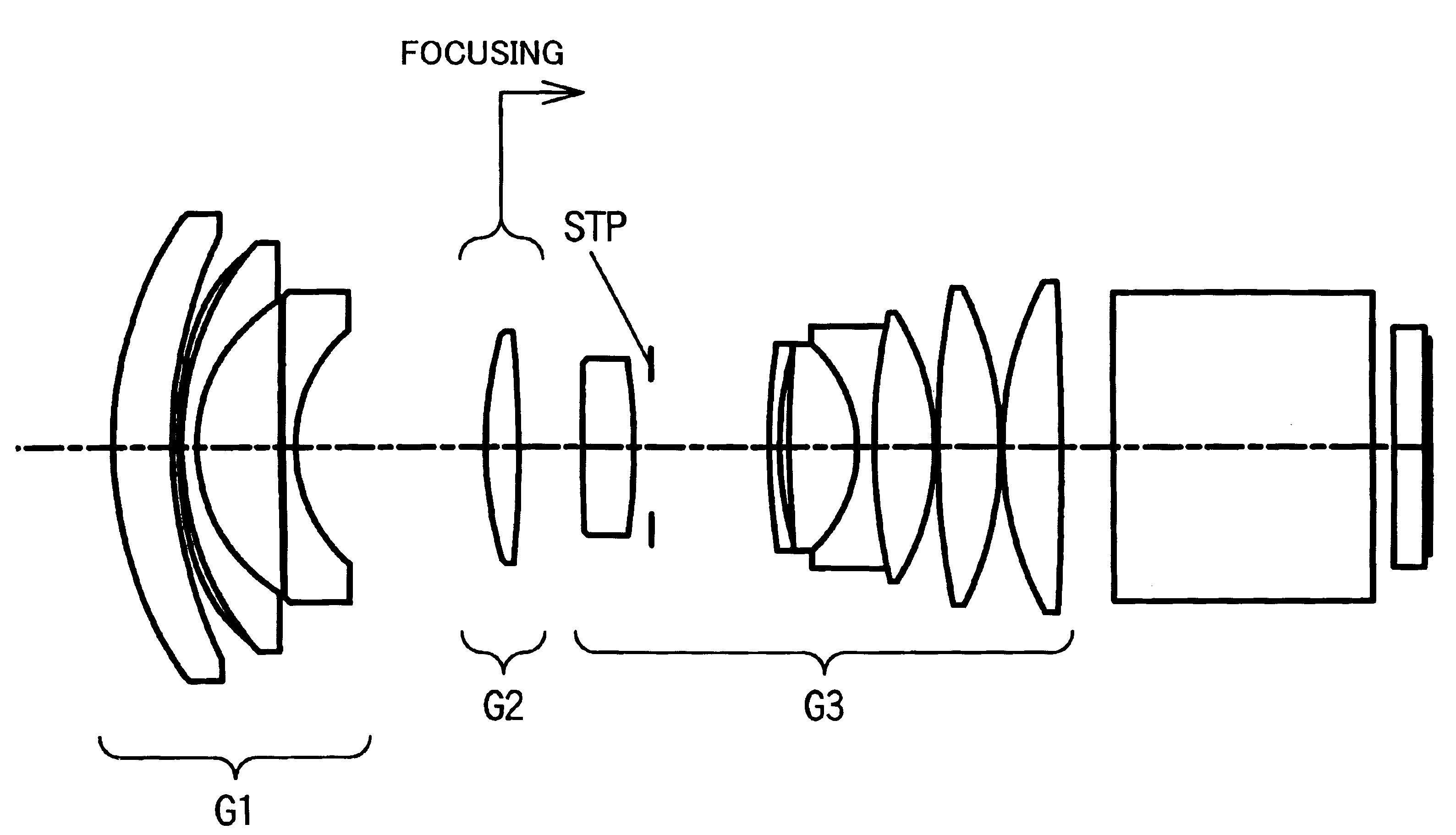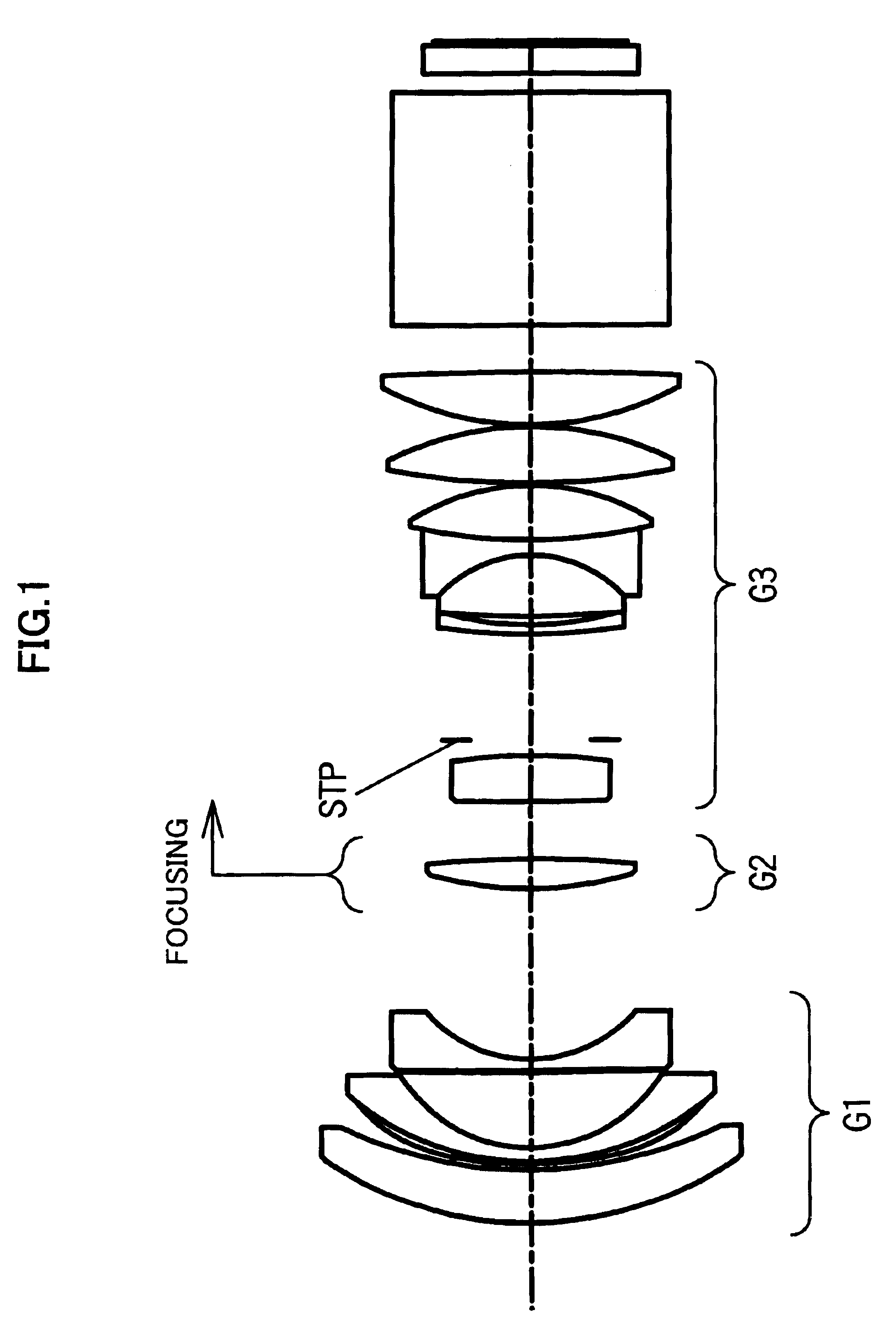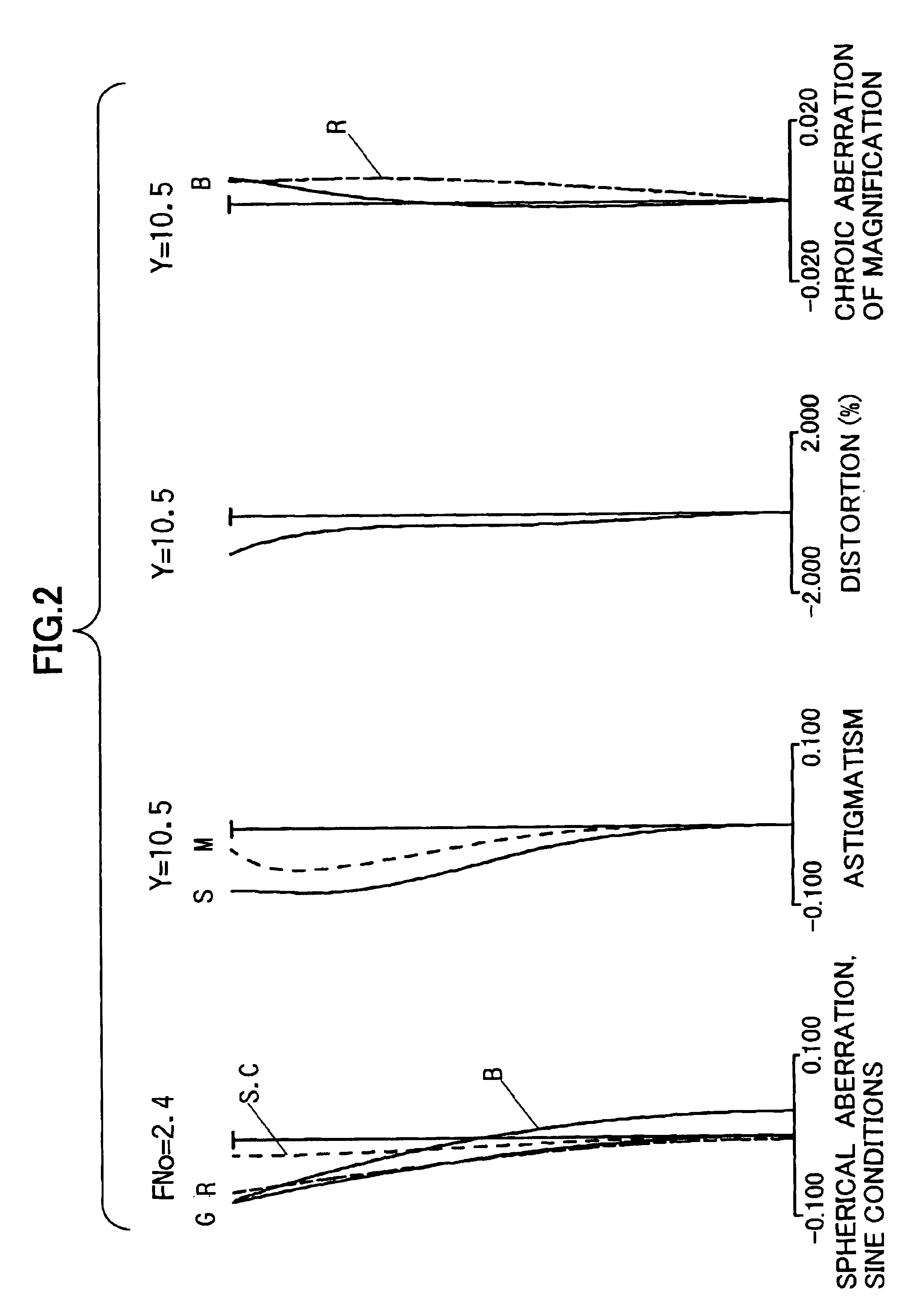Projection lens system
- Summary
- Abstract
- Description
- Claims
- Application Information
AI Technical Summary
Benefits of technology
Problems solved by technology
Method used
Image
Examples
Embodiment Construction
[0022]Referring to the accompanying drawings, preferred embodiments of a projection lens system of according to the present invention will be described.
[0023]FIG. 1 is a cross sectional view of lenses in the exemplary projection lens system. In FIG. 1, reference alphanumerical symbols G1, G2 and G3 denote a first group of lenses of negative refractive power, a second group of lenses of positive refractive power, and a third group of lenses of positive refractive power, respectively, and STP designates an aperture stop.
[0024]FIGS. 2, 3 and 4 are diagrams illustrating aberrations in 40-inch, 52-inch and 61-inch dimensions of screen occurred in the exemplary projection lens system, respectively. In FIGS. 2 and 4, aberrations for wavelengths λ=450 nm, =546 nm, and =650 nm are denoted by B for Blue, G for Green and R for Red, respectively.
[0025]In the exemplary projection lens system, f is a focal length, F no is an F number, # is a plane number, r is a radius of curvature of a lens plan...
PUM
 Login to View More
Login to View More Abstract
Description
Claims
Application Information
 Login to View More
Login to View More - R&D
- Intellectual Property
- Life Sciences
- Materials
- Tech Scout
- Unparalleled Data Quality
- Higher Quality Content
- 60% Fewer Hallucinations
Browse by: Latest US Patents, China's latest patents, Technical Efficacy Thesaurus, Application Domain, Technology Topic, Popular Technical Reports.
© 2025 PatSnap. All rights reserved.Legal|Privacy policy|Modern Slavery Act Transparency Statement|Sitemap|About US| Contact US: help@patsnap.com



